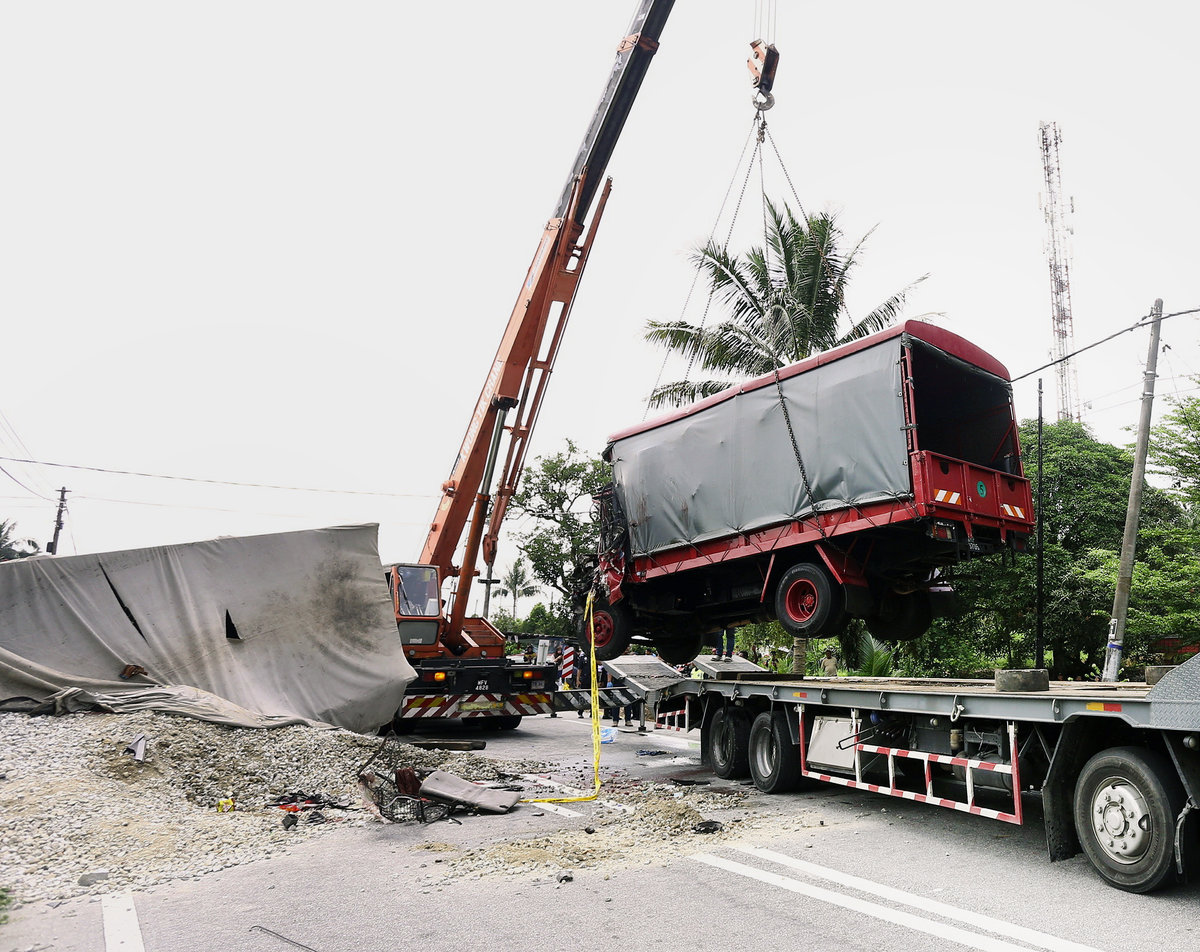KUALA LUMPUR: The Ministry of Transport (MOT) today revealed that the gravel-laden lorry involved in the tragic accident involving a Federal Reserve Unit (FRU) truck on Jalan Chikus–Sungai Lampam, Teluk Intan, last month, did not have the permission to carry the load.
Citing the initial report of the investigation into the crash, it said the tipper lorry is only allowed to carry coal, but at the time of the incident, it was carrying 40,960 kilogrammes of gravel, which exceeded 70 per cent of the permitted load limit.
The lorry was also found not equipped with a Global Positioning System (GPS) as required by the Land Public Transport Agency (APAD).
“The lorry violated the conditions of the Written Authorisation License provided under Section 57 of the Land Public Transport Act 2010,“ according to the report.
In the accident at 8.54 am on May 13, nine FRU members were killed, while nine others were injured after the FRU truck they were travelling in collided with the tipper lorry.
The report also stated that further investigations by the Road Transport Department (JPJ) are being carried out, with the investigation papers to be submitted to the prosecution for further action.
“The absence of seat belts and the design of the ‘bench’ seats at the back of the FRU lorry contributed to the high number of casualties,” according to the report.
According to the report, the mechanism of injury to the victims in the FRU lorry was also exacerbated by the presence of unrestrained objects in the cabin that could potentially become secondary projectiles during the collision.
“The combination of the absence of a restraint system and the presence of unrestrained objects is believed to be a major contributing factor to the high rate of serious injuries and fatalities in this incident.
“In addition, the investigation also found that there was no indication of the existence of seatbelt facilities in the front seats, including the driver and front passenger of the FRU lorry,” stated the report.
It said the bench-type seats in the FRU truck, which accommodate most of the passengers, were also believed not to meet the specifications of United Nations (UN) Regulation No. 17 or UN Regulation No. 80.
The investigation also found that the tipper lorry entered the opposite lane, which was the lane being travelled by the FRU convoy.
“As a result of the collision, both lorries overturned onto their left sides and ended up on their sides. The incident occurred in good weather conditions and the road surface was dry,“ according to the report.
In addition, there was no evidence to indicate that any mechanical failure directly contributed to the accident.
“Overall, based on the technical inspection, the main mechanical systems such as brakes, tyres, steering and suspension of both lorries were found to be in satisfactory condition and comply with the set standards,“ the report said









